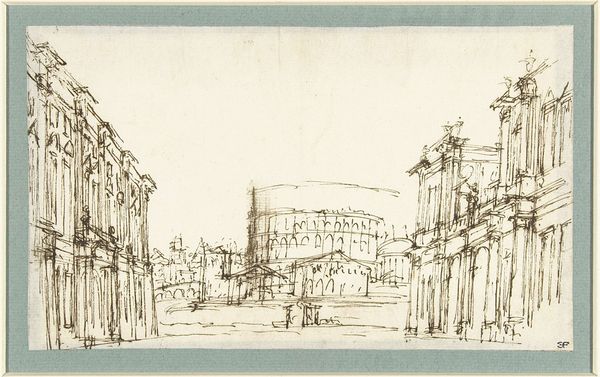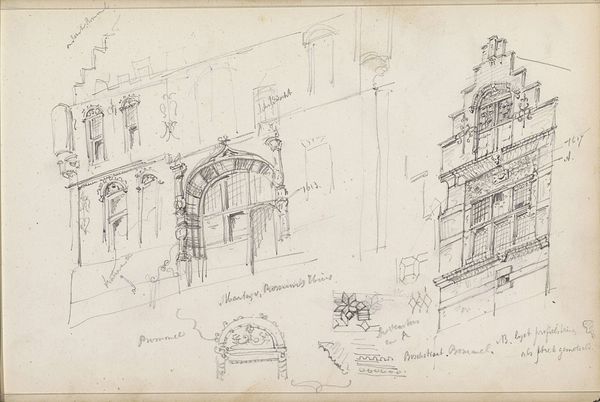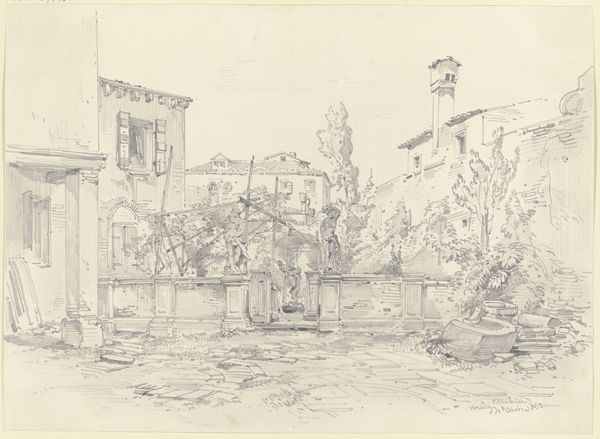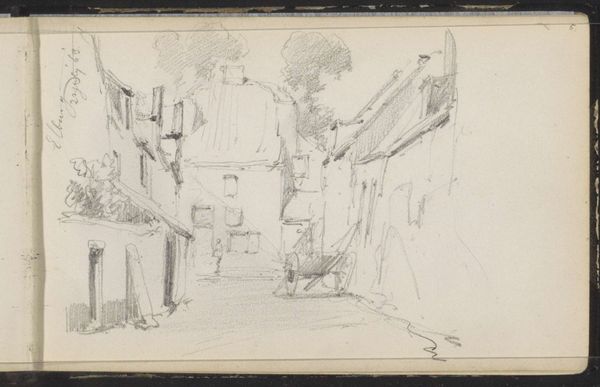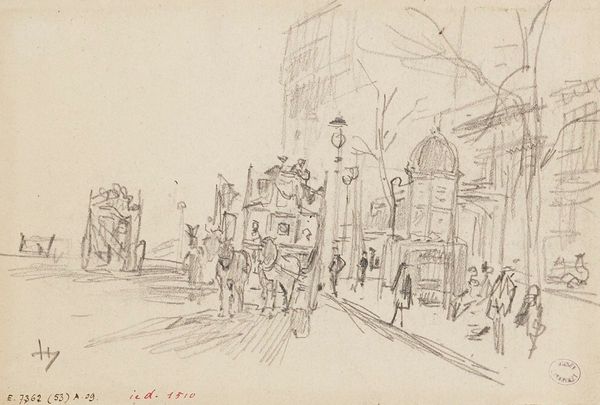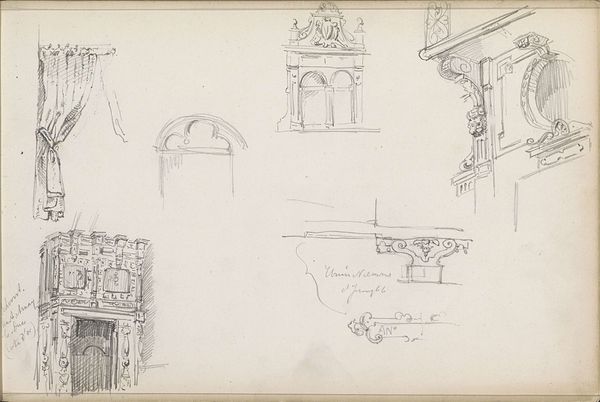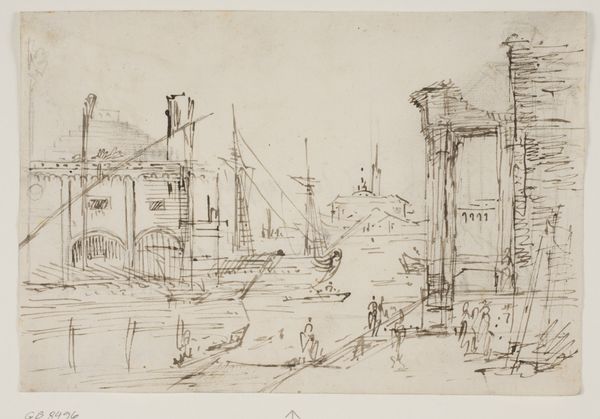
Paleis Noordeinde met het ruiterstandbeeld van Willem van Oranje c. 1845 - 1891
0:00
0:00
johannesbosboom
Rijksmuseum
drawing, pencil, architecture
#
architectural sketch
#
drawing
#
statue
#
aged paper
#
sketch book
#
incomplete sketchy
#
landscape
#
personal sketchbook
#
sketchwork
#
sketch
#
pen-ink sketch
#
pencil
#
line
#
sketchbook drawing
#
cityscape
#
storyboard and sketchbook work
#
architecture
#
initial sketch
Copyright: Rijks Museum: Open Domain
Curator: This is Johannes Bosboom's "Paleis Noordeinde met het ruiterstandbeeld van Willem van Oranje," likely created between 1845 and 1891. Editor: It has such an ephemeral quality; those quick lines suggesting forms almost dissolving into the page. Curator: Indeed. Bosboom, known for his church interiors, also produced these cityscapes as preparatory sketches or perhaps personal studies. What is visible speaks to the history embedded within its material production: aged paper bearing faint lines of pencil and ink. We see the literal foundation and fabrication, with all of its layered social contexts, within a society under industrial transformation. Editor: Right. Note how Bosboom uses these simple materials to depict Noordeinde Palace and the equestrian statue of William of Orange. It immediately makes you consider power structures within the city – who holds dominion and how that plays out on these streets, both past and present. I find it compelling to view what feels so light as an artifact in which we must excavate. The palace looms as the architecture suggests control; however, the rough sketch lends to a feeling that these constructs are both real and temporary. Curator: Exactly! The incompleteness almost invites the viewer to participate in constructing the scene and understanding its place. This mirrors broader questions about labor and production. It seems particularly fitting as many traditional hierarchies came under increasing tension during this time. And looking through a feminist lens, who exactly has been left out or whose history has been erased within this visual construction of place? Editor: Or even more straightforwardly, the production process. The rapid execution indicates accessibility in its making; a tool available for just about anyone who sought it. Perhaps more telling than we realized at first. Curator: So true. Even in this modest sketchbook drawing, Bosboom provides insight into Dutch history and the shifting material landscape. Editor: Definitely more than meets the eye. This artwork and his deliberate execution using these specific methods can open the door to important discussions about the intersections of society, status and place.
Comments
No comments
Be the first to comment and join the conversation on the ultimate creative platform.




